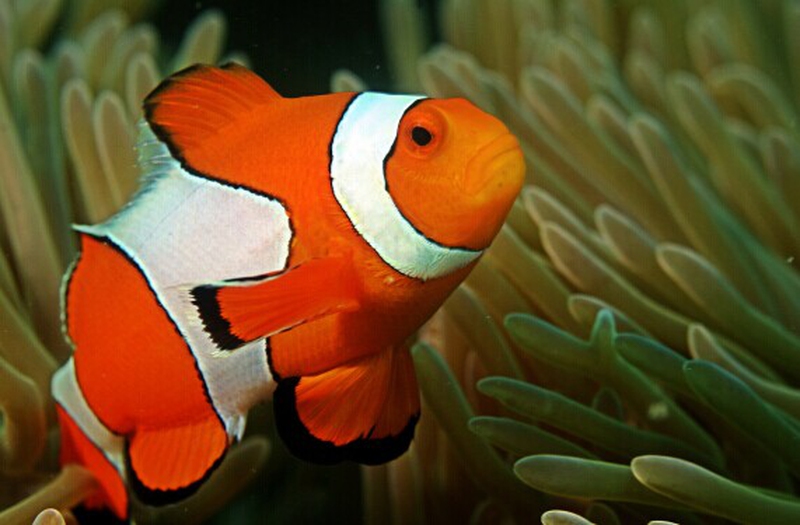Dropsy fish is a condition that is often caused by a bacterial infection in the tissues of the aquarium fish due to poor water quality. The primary issue is the accumulation of fluid in the tissues due to excessive water intake or inadequate elimination of water from the system. Although it is not a disease, yet for technical reasons, most experts address it like an illness. It is imperative to understand that although there is a chance that fish may recover spontaneously with treatment, it is highly suggested to keep the dropsy fish separating from normal fish to prevent the spread of illness.

Symptoms of Dropsy Fish
Common symptoms of dropsy fish are:
Heavy tummy that appears swollen and bloated
Ulcers along the lateral margins of the body
Gills turns pale (due to anemia)
Stringy and pale feces
Bulging of eyes
Swollen and red anus
Scales stand out (more like a pinecone appearance)
Fish spine lose its strength and stability
Changes in the eating behavior
Swim or float near the surface of tank
Lose energy and appear lethargic
Causes and Risk Factors of Dropsy Fish
Causes
This infection is caused by the bacteria Aeromonas. This bacterium is normally found in aquarium due to bad quality water. The most prone fish are those who are under stress or have poor or weak immune system. Likewise, in cases of systemic involvement (for example kidneys), the fish tends to accumulate water that makes the belly swollen and bloated. In many cases dropsy is not fatal, but it is more preferable to seek treatment for early symptoms.
Risk Factors
The most important factor that leads to dropsy in fish is stress. Getting stressed for short time does not cause dropsy but long-term exposure can increase the risk. Another important risk factor is poor or compromised immune system. There are certain other factors that may contribute to aggravated levels of stress in the aquarium fish.
Bullying from other tank mates
Presence of a disease or parasite in the aquarium
Poor quality diet or insufficient food
Inadequate survival conditions for certain fish
Sudden changes in water (in terms of temperature and pH)
Injuries incurred as a result of bullying by other fish
Treatment for Dropsy Fish
Isolate the Sick Fish in Quarantine Tank
Clean the original tank immediately and keep an eye on the sick fish. Treat the sick fish in cleaner and healthier environment.
Addition of Salt
Insert Epsom salt about no more than 2 and half teaspoons in the quarantine tank. Since Epsom salt has a property of extracting extra water out of belly, it should improve the overall health of the ill fish.
Antibacterial Diet
Buy an antibacterial diet or prepare one by yourself. All you need is a mixture of antibiotic such as tetracycline or chloromycetin with fish food. And keep this diet running for at least 10 days. Make sure to keep a strict check on the fish behavior during that time.
Use of Antibiotics
If antibacterial diet and salt are ineffective in 10 to 15 days, the last option is to use antibiotic in the tank water. Add Maracyn Two in water of the tank. This will kill the bacteria that are present in water and since it is easily diffusible through skin, it usually exerts its action in a few days. But remember to see the dosage and other instructions on the label.
However, if the antibiotic treatment also fails, there are very few chances that the fish will survive because dropsy is probably not caused by the bacterial infection. In such conditions one should contact the nearest pet store or hospital and seek guidance from professionals.
See the video below to learn more about the treatments for dropsy fish:
Prevention of Dropsy Fish
Keep the Aquarium Clean
Change the tank water regularly: the water should be changed every week and the whole tank should be cleaned at least once in a month.
Change filter: filter is perhaps the most essential component of an aquarium and it should be cleaned at intervals to maintain the filtration activity.
Avoid Overpopulating Your Tank
Make sure that there is ample space for every fish to move individually without any problem. This is an important element in the prevention of stress.
Don’t Give Surplus Amounts of Food
Extra food that is not consumed settles down in the bottom of the tank and decompose, thereby increasing the risk of bacterial diseases due to food decay.
Variety of Feeds/Nutrients
Feed the fish with a wide variety of foods. Make sure to use the flake food within a month of opening the pack.

View All Comments /Add Comment